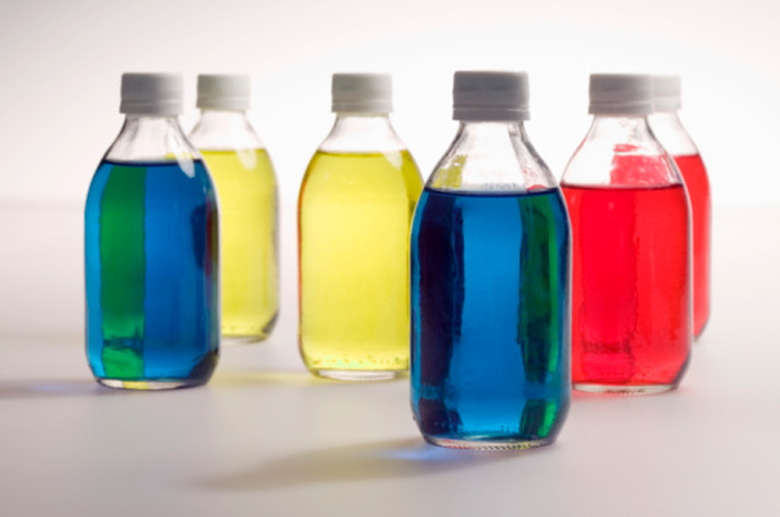How To Measure Carbonation Levels
Carbon dioxide gas or CO2 is contained under pressure in a can or bottle to form carbonated beverages. The carbonation is responsible for the fizz in the drink and provides its unique sensation. Carbon dioxide dissolves in the liquid and is released when the bottle or can is opened — which is when the fizz becomes visible. Various kinds of sodas are able to contain different quantities of carbonation. There are a couple of experiments that can measure the level of carbonation in a drink.
Balloon Test
Step 1
Fit the opening of a balloon over the filled soda or carbonated beverage bottle
Step 2
Shake up the bottle and allow the fizz to escape and fill up the balloon.
Step 3
Complete this method for each type of beverage you would like to test to see which one produces the most fizz. Make sure you use the same size balloons for each test, or the results will be inaccurate.
Step 4
Take measurements of all the balloons with a tape measure or ruler. The largest balloon contains the beverage that produces the most fizz.
Volume Displacement Test
Step 1
Attach a tube to the top of a spray bottle filled with a carbonated beverage or soda.
Step 2
Fill a graduated cylinder with water. Fill a bathtub or plastic tub with water, at least a few inches deep. Insert the other end of the tube from the spray bottle into the graduated cylinder. Carefully invert the cylinder, using your hand to prevent the water coming out, and place it upside-down in the tub. Measure the height of the liquid remaining in the cylinder.
Step 3
Firmly shake the spray bottle. The gas will bubble up and displace the liquid in the graduated cylinder. Firmly hold the tube and the cylinder together. Shake the bottle once more to make sure all the carbonation is gone from the liquid. Stop shaking the bottle when no more bubbles come out.
Step 4
Calculate the volume of gas that was released by measuring the height of the water that remains in the cylinder, and subtracting this from the initial height that you measured in step 2.
Things Needed
- Soda bottle or carbonated beverage
- Balloon
- Measuring tape
- Rubber tubing
- 500 ml spray bottle or any bottle you can easily attach tubing to
- 3/16 in. I.D. Tygon tubing (or any rubber tubing that fits on a bottle)
- 1000 ml graduated cylinder (plastic) or another suitable container
- Plastic tub
- Water
- Paper
- Pencil
TL;DR (Too Long; Didn't Read)
Avoid tipping the bottle upside down or this could cause inaccurate results.
Cite This Article
MLA
Christensen, Dianne. "How To Measure Carbonation Levels" sciencing.com, https://www.sciencing.com/measure-carbonation-levels-8493937/. 24 April 2017.
APA
Christensen, Dianne. (2017, April 24). How To Measure Carbonation Levels. sciencing.com. Retrieved from https://www.sciencing.com/measure-carbonation-levels-8493937/
Chicago
Christensen, Dianne. How To Measure Carbonation Levels last modified March 24, 2022. https://www.sciencing.com/measure-carbonation-levels-8493937/
